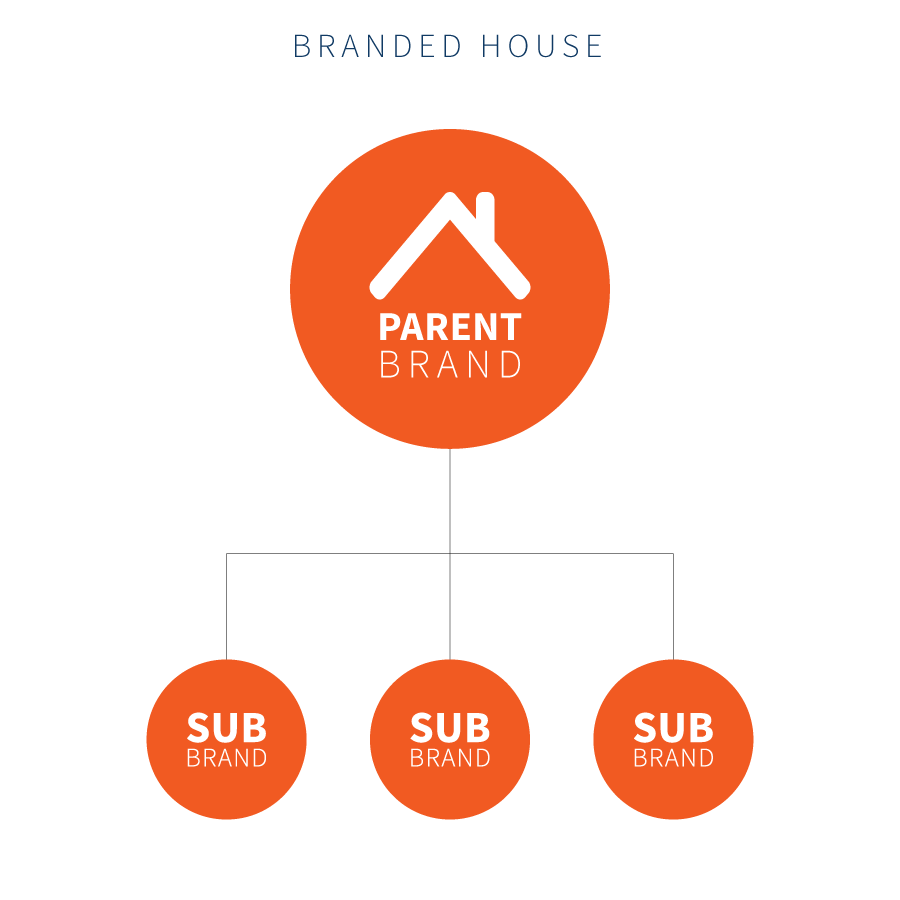
Branding Responsory
House of Brands. The complete opposite of a Branded House, is a House of Brands (HOB). As the descriptor implies, sub-brands are featured or promoted, rather than the company or corporate brand. Hierarchies within the company are more complex. Many HOB businesses are consumer products or holding companies, which acquire brands, especially large.

Sarah's Study Blog Brand Strategy
When it comes to brand strategy for a growing professional services firm, it may be better to go in the direction of a branded house rather than a house of brands.Let me explain. Types of brand strategy 1. Branded house. In this model, the firm is the brand. Services and market sectors (or practice areas) are subsets of that primary brand and are not formally branded.

Branding strategy how to define the right brand architecture? Enigma
A House of Brands is the exact opposite of a Branded House. Whereas a Branded House maintains the focus on a single, well-known and consistent brand, a House of Brands is home to numerous brands, each independent of one another, and each with its own audience, marketing, look and feel. P&G and Unilever are great examples of a House of Brands.

Branded House vs House of Brands vs Hybrid by The Framework Bank Medium
House of brands vs. branded house. A branded house strategy provides consistent messaging for all of a company's products or services, while the house of brands method focuses on developing a unique brand for each offering. Understanding some of the key differences between these two strategies can help you determine how to market a company's.

Chuẩn bị cho bản kế hoạch marketing 14 yếu tố để có bài trình bày hiệu
Branded House Definition. On the other hand, a branded house is more like a single-child family. In this case, the parent company is the main brand, and all its products endorsed brands or services carry its name. This approach allows the brand equity of the parent brand to extend to all the sub-brands or new products.

Branding Strategy Source Branded House vs. House of Brands
A branded house is a marketing model that defines the company as the brand. This means that the different services and products provided by the company fall under a primary brand. For example, a company may have different offerings, such as broadband and TV services, flights and banking services that fall under one main brand.
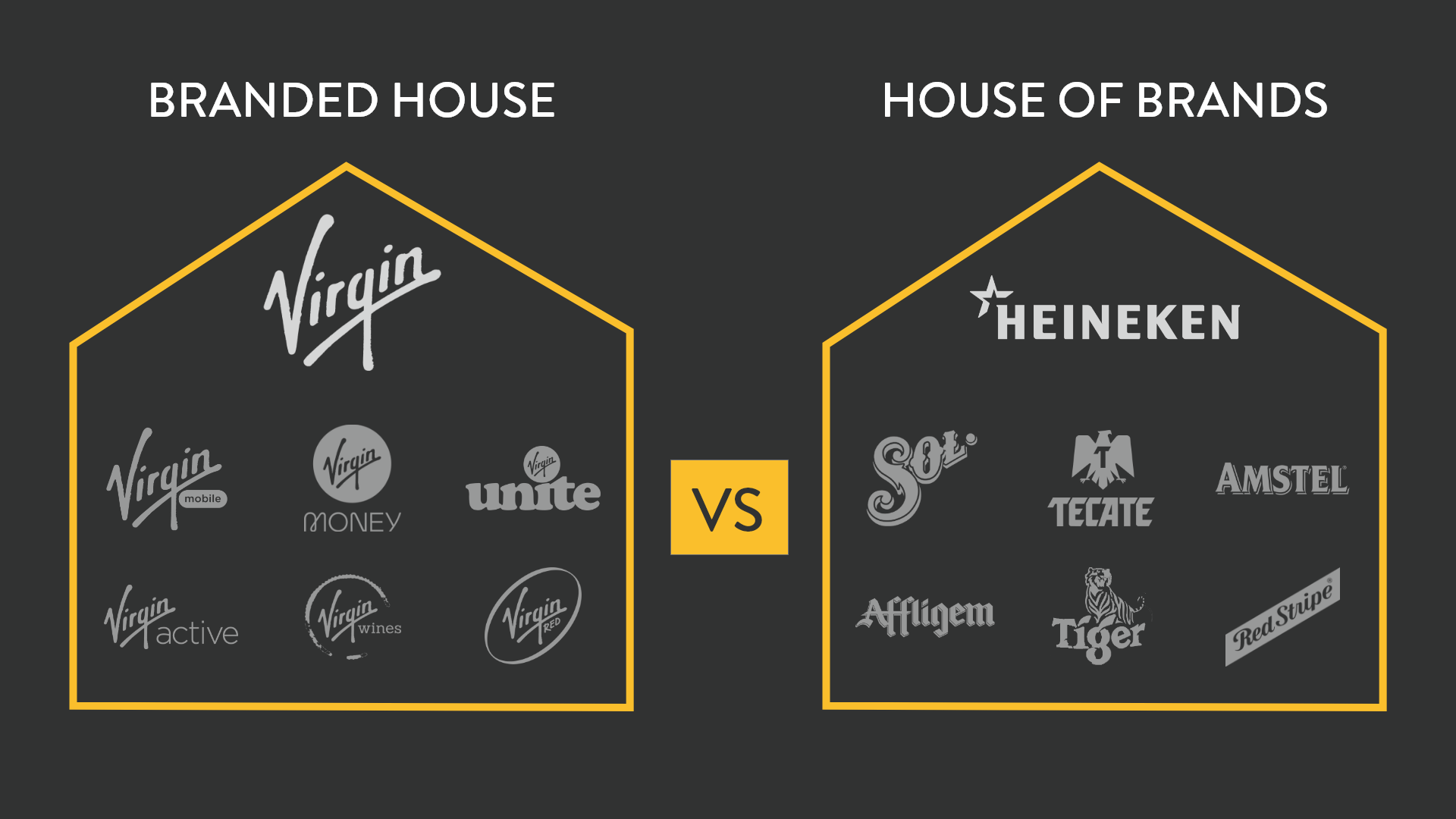
MultiBrand Strategies Branded House vs. House of Brands
Branded House. In a Brand House Model organizations invest in making the single "mothership" brand image known and loved. Customers come to trust the mothership and then by default trust the sub-brands. In most cases, the corporate name and brand identity is one and the same, the marketing is the same, the brand position and the value.
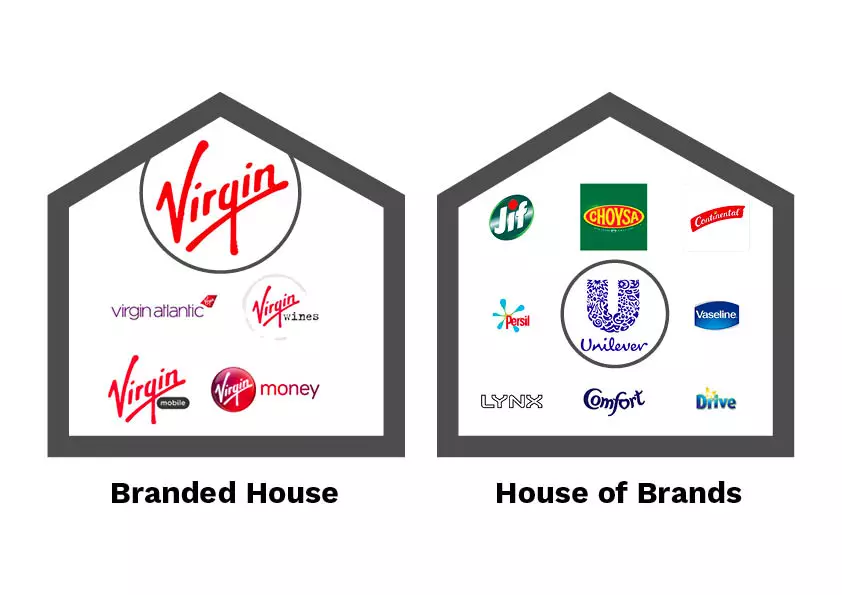
One brand or a variety of brands for your company? Downing
Here are the differences between a branded house and a house of brands strategy. NEW THINKING. January 2, 2024 5 Keys To Memorable Marketing. December 27, 2023 The Difference Between Purpose And Value Proposition. December 20, 2023 Brand Reputation Recovery Requires Action.

Brand Architecture Branded Vs House Of Brands Guide For Managing Brand
There are two key models to consider: a Branded House and a House of Brands. While they may sound similar, each model offers distinct benefits to a growing company. Branded House. In a Branded House model, the parent or holding company remains the parent brand and all of the smaller sub-brands operate under its umbrella.

Brand Architecture Foundations Branded House vs House of Brands
House of brands launches new brands. Customer perception - Branded house seeks to build parent brand equity. House of brands cultivates equity for each brand separately. Risk - Problems with one branded house product can hurt the parent brand. With house of brands, risk is better contained. Here's a table summarizing the key differences.

Tweak Your Biz The Business Owner’s Guide to Brand Architecture
Branded house or house of brands? It's a question exhibit managers will increasingly face as their firms' merger and acquisition activity continue to rise, bringing new companies and their established brands into the fold. Use our four questions to guide your decision. 414-257-2000. Contact Us.
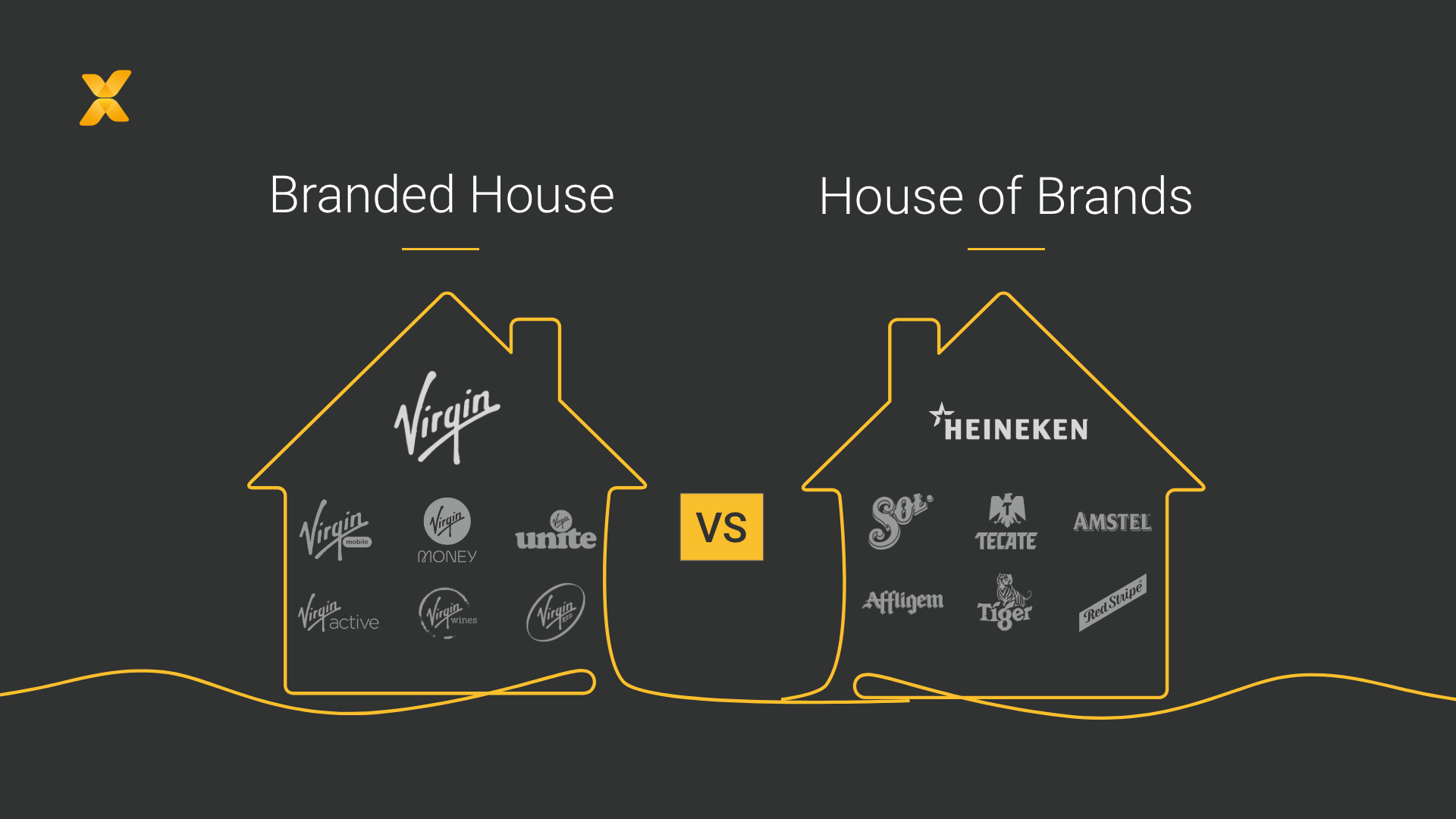
MultiBrand Strategies Branded House vs. House of Brands
A company that markets as a Branded House is expressing its value proposition in a single, unified voice. In most cases, the corporate name and brand identity is one and the same. While a house of brands content strategy requires that each brand have its own identity and "backstory.". Each sub-brand or sibling brand must anchor a place in.

Brand Architecture Types & Best Examples (Famous Brands)
A branded house model leverages the parent brand and attaches it to each child brand below, while a house of brands model allows for unique child brands separate from the parent brand. Branded house pros and cons. A branded house approach is wise if you want your parent brand to be a well-known entity or if it already is. If your parent brand.
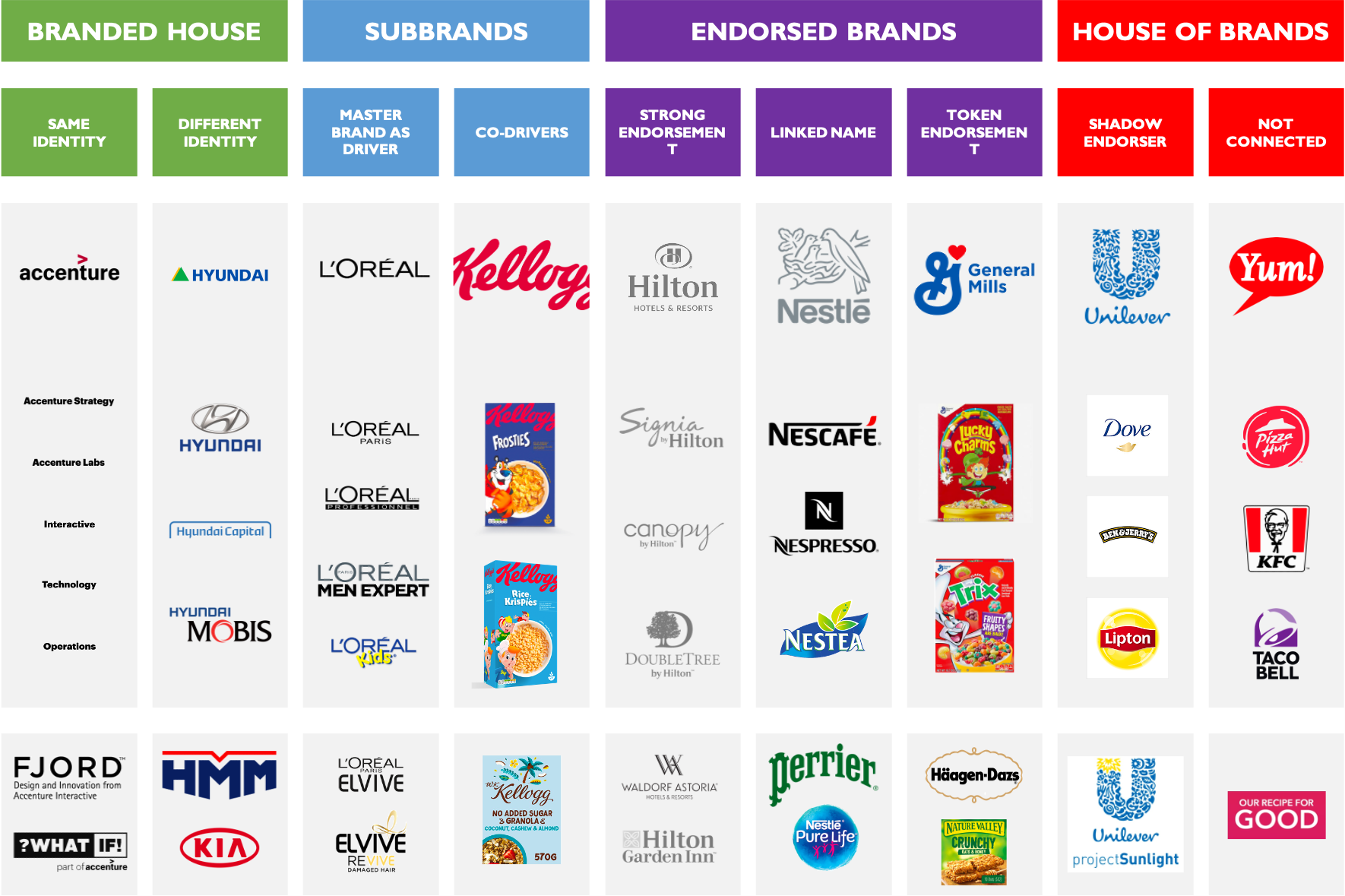
Branded House and House of Brands Baron Sauvage
Maison de l'Ile-de-France is a student residence with 142 comfortable and bright rooms, with a large window opening onto the green landscape of the Cité Internationale. Located between the House.
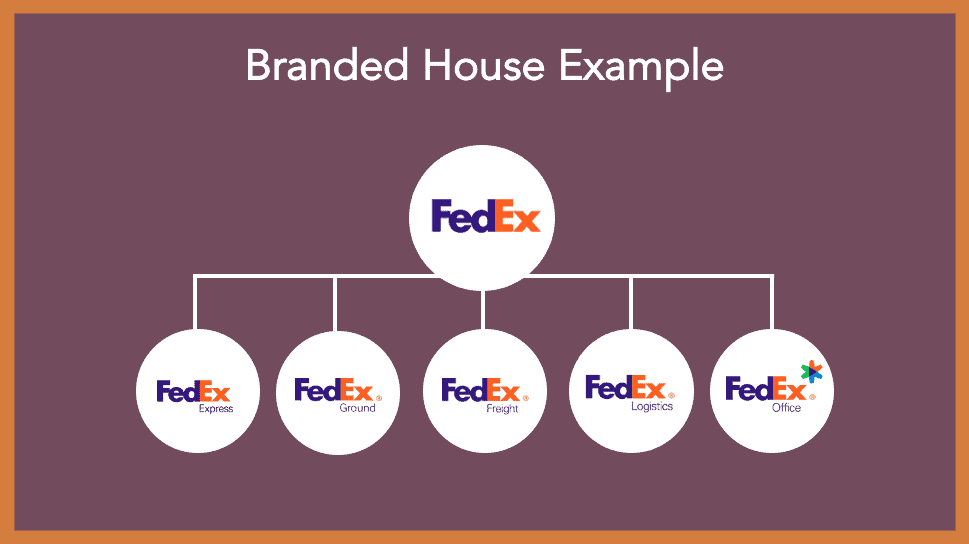
Difference Between House of Brands and Branded House Clarity Quest
In part 2 of our brand architecture guide, we'll look at the two framework classifications, which are placed between a branded house and a house of brands - sub-brands and endorsed brands. To receive our bi-weekly newsletter with the latest blog post and update on new brand case studies added to BrandStruck, just send your email to.

Your brand architecture is an organizing structure that defines how all
House of Brands. Now this is the complete opposite situation to a branded house. A house of brands structure exists where there is (usually) a large umbrella holding company that owns and is home to numerous brands. Each brand is independent of the others and is more than likely owned by another company (within the umbrella company's.